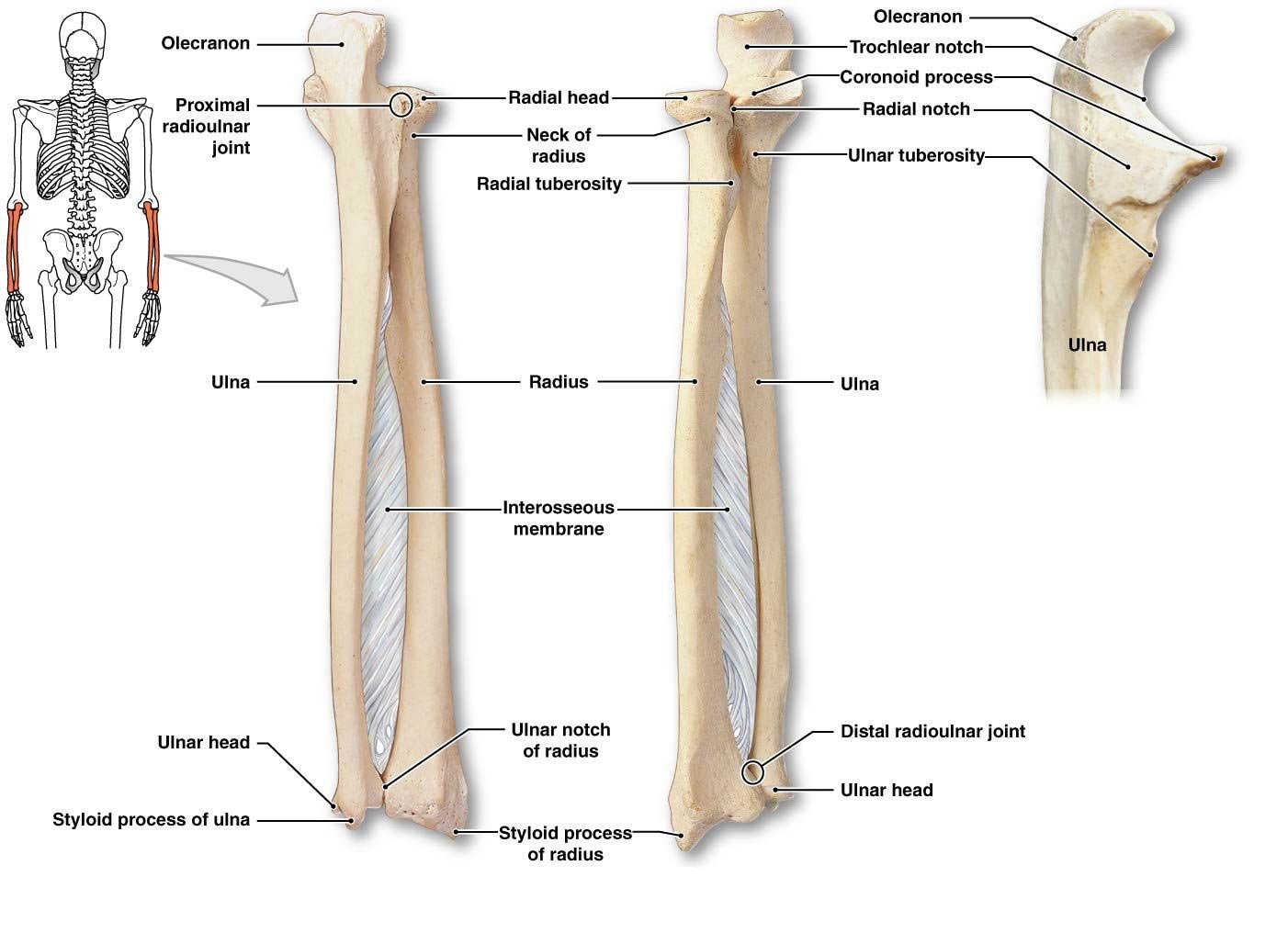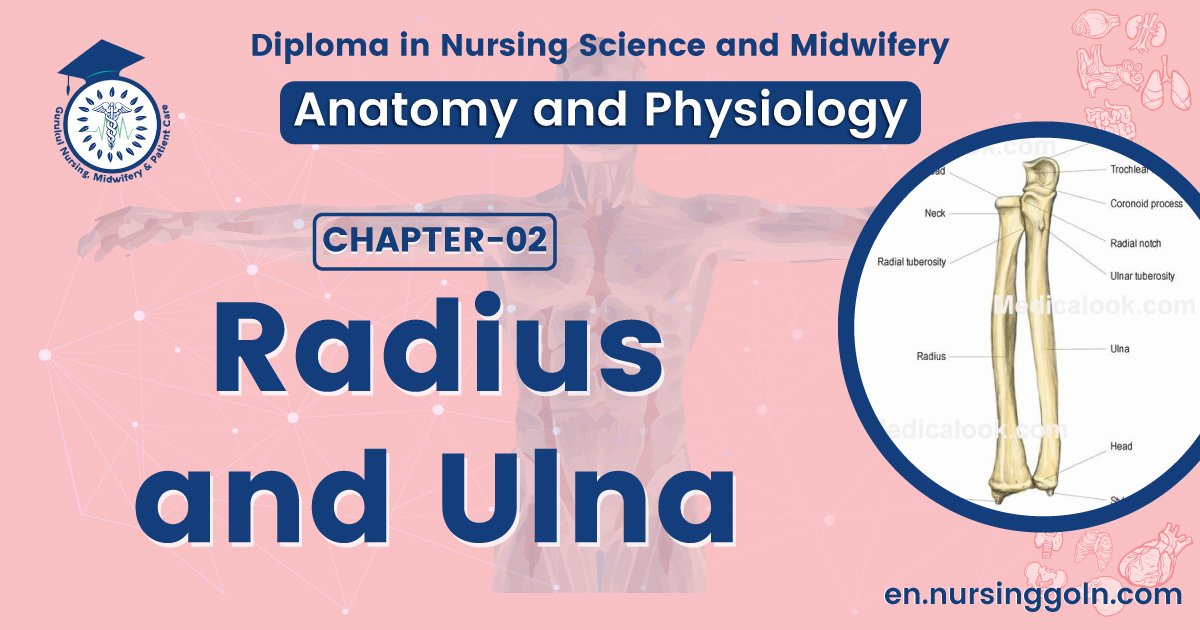Radius and ulna– The course is designed for the basic understanding of anatomical structures and physiological functions of human body, musculoskeletal system, digestive system, respiratory system; cardiovascular system; urinary system, endocrine system, reproductive system, nervous system, hematologic system, sensory organs, integumentary system, and immune system.The aim of the course is to acquire knowledge and skills regarding anatomy and physiology.
Radius and ulna

RADIUS
In the anatomic position, the radius is the lateral bone of the forearm. It articulates with the capitulum of the humerus and with the ulna. The radius is primarily a bone of movement in the forearm during rotation (supination and pronation) relative to the fixed ulna. The following landmarks are found on the radius:
Head. A disc-shaped structure that enables the synovial pivot joint in the forearm.
Radial tuberosity. A swelling inferior to the radial neck on the medial surface that serves as an attachment for the biceps brachii muscle.
Radial styloid process. Prominent and palpable process on the distal and lateral end that serves as an attachment for the brachioradialis muscle.

ULNA
In the anatomic position, the ulna is the medial bone of the forearm. It articulates with the trochlea of the humerus and with the radius. The ulna remains relatively fixed during forearm rotation of pronation and supination. The following landmarks are found on the ulna:
Olecranon process. A large posterior projection that contributes to the trochlear notch and articulates with the humerus (trochlea and the olecranon fossa).
Coronoid process. A small anterior projection that contributes to the trochlear notch and articulates with the trochlea and the coronoid fossa of the humerus. Trochlear notch. A large notch on the proximal end of the ulna that is formed by the olecranon and coronoid processes.

It articulates with the trochlea on the humerus.
- Ulnar head. A distal rounded surface at the end of the ulna.
- Ulnar styloid process. A palpable distal projection from the dorsal medial ulna.
Read more:
